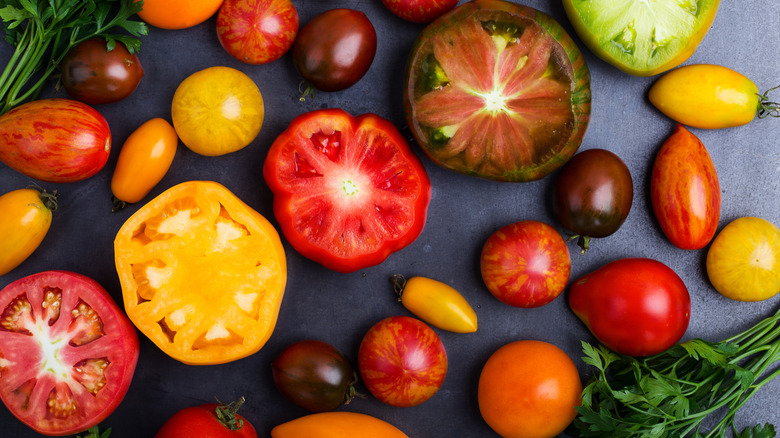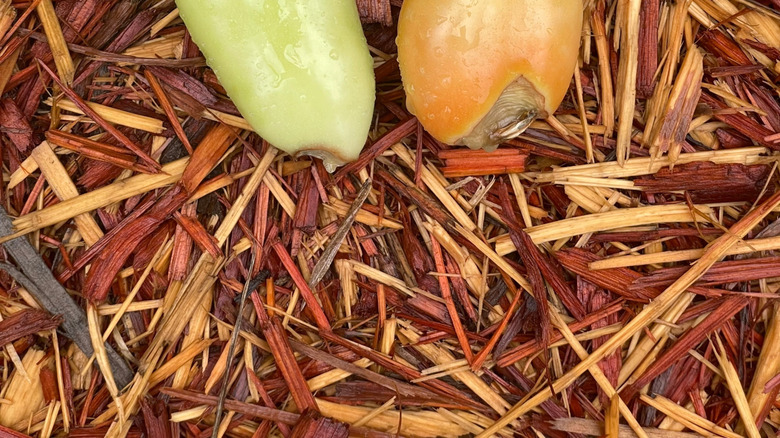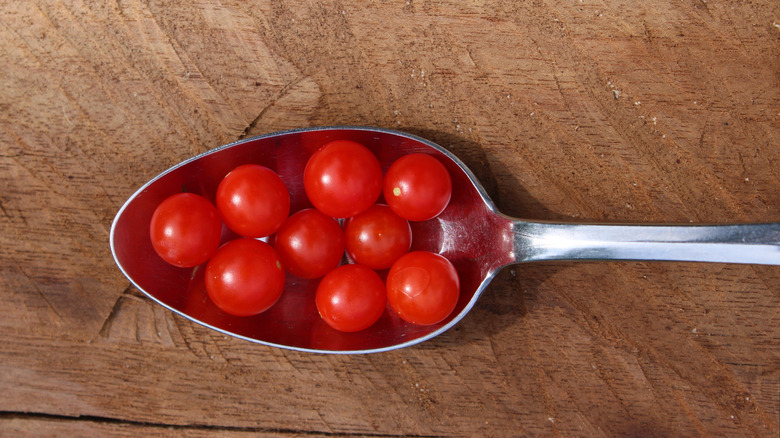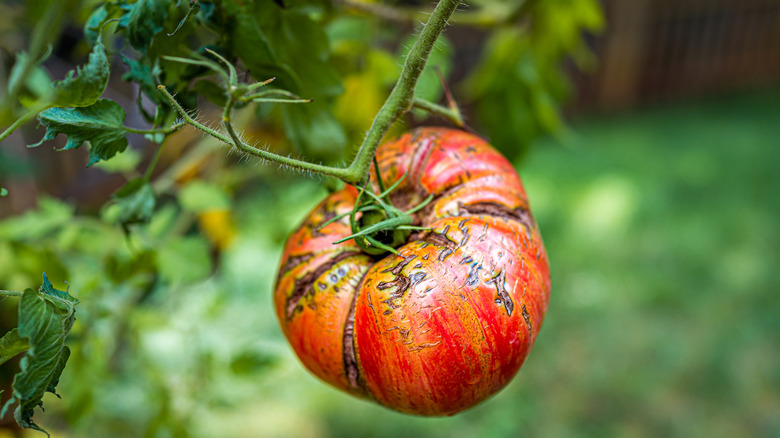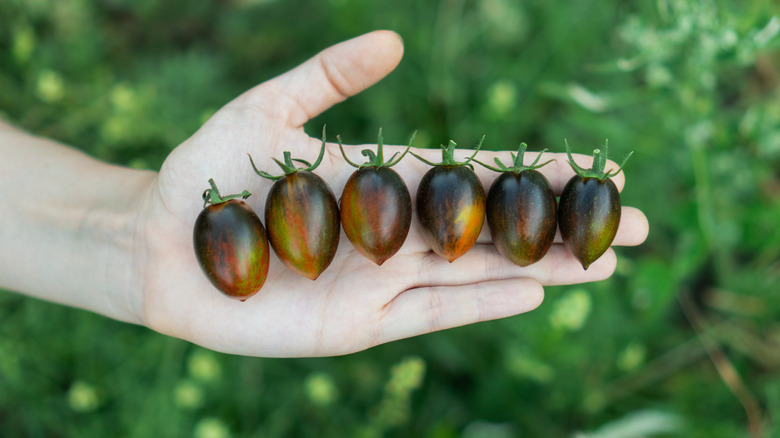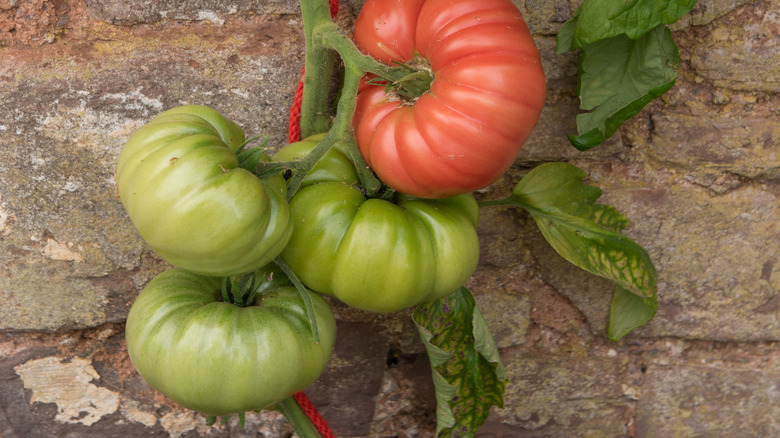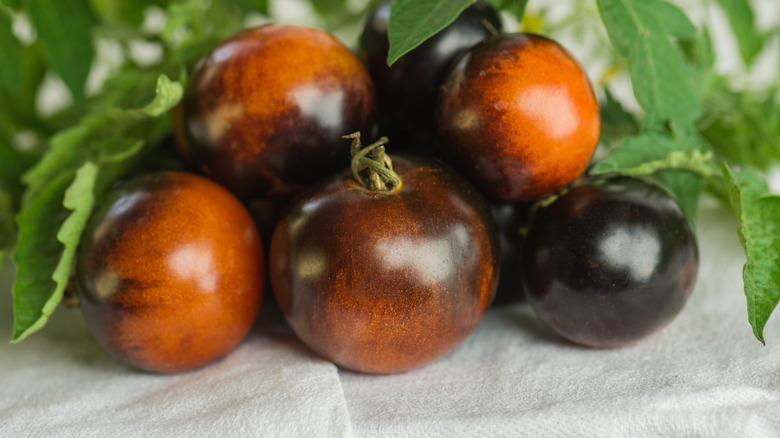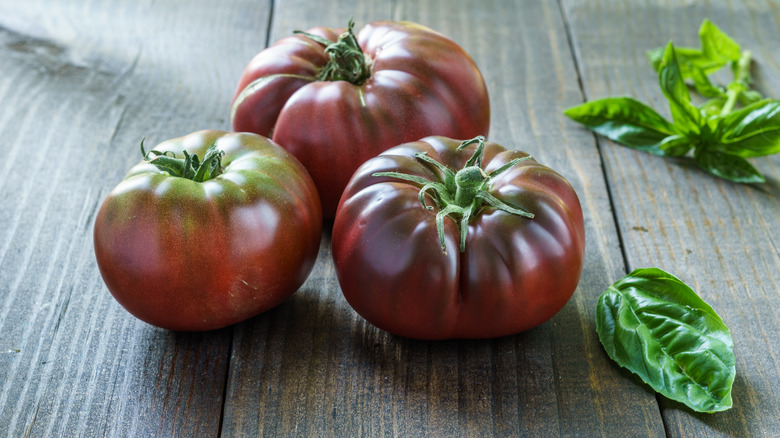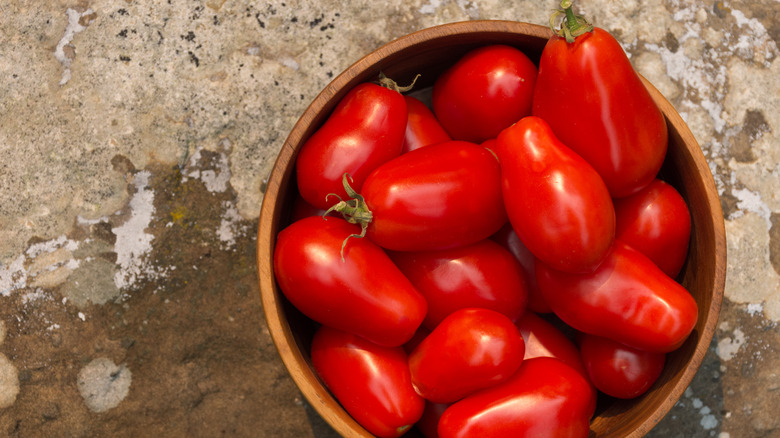8 Finicky Tomato Varieties That Aren't Worth Growing In Your Garden
Tomatoes are one of the most popular vegetable garden plants — though yes, technically, they are fruits! Newer hybrid strains are bred to resist fungal diseases and are often of uniform size and shape: There are even some varieties that offer the perfect harvest without splitting. Many tomato enthusiasts love the current heirloom tomato craze, with many older (and newly bred) varieties available that have exciting variations in color, shape, and flavor. These plants do sometimes carry their share of problems, including large beefsteaks, 'Mortgage Lifter', and others.
Growing tomatoes seems straightforward, but there are many considerations. As a professional gardener, my main focus is perennials, but these popular annuals often prompt questions from clients who want to know "what they're doing wrong." Tomatoes need ample sun, well-drained soil, and regular watering (weather conditions are a huge factor here). Some growers swear by fertilizing. Tomato plants also need to be checked frequently for diseases and pests. Buying the right tomato seedlings or seeds is also important. Some prefer organic heirlooms, despite their vulnerability to fungal diseases. But disease-resistant hybrid plants from large nurseries can still get infected with diseases (like early blight) due to crowded conditions.
The best way to determine if a tomato variety is right for your garden is to try it out. Also, get as much information as you can from online gardening forums or your local Cooperative Extension. You may learn that the problem you're seeing is an easy fix, or that the tomato variety you've chosen is one known to be finicky in your area. Luckily there are many varieties of tomato to choose from.
'San Marzano' tomatoes
The 'San Marzano' is a classic plum-style tomato, also known as Italian, Roma, or paste tomato. They're valued for their thin skins, meaty flesh and small, scarce seeds. They also resist splitting and cracking due to their slender shapes. However, these types of tomatoes can be susceptible to blossom end rot. I've had mixed success growing 'San Marzano' plants: Some years they've done fine, while other years I lost much of the crop to this condition. Be sure your soil is well-draining, and water as regularly and consistently as you can.
Spoon tomatoes
Also known as currant-sized tomatoes, these varieties (including 'Candyland Red') have recently become popular, perhaps due to their unusually small size. They're difficult to harvest at the point of ripeness, however, because being so small, they ripen quickly and tend to fall off the vine before you can pick them. If you keep a close watch and can harvest them before they fall, they're a fun tomato for your table, or maybe even to make videos with miniature foods.
Large heirloom beefsteak tomatoes
Some of the most popular heirloom tomatoes are the large beefsteaks, with a wide range of colors and flavor profiles. While enthusiasts of these delicious tomatoes don't mind their bumpy appearance, they do have some issues to watch for. Their large size means they're vulnerable to cracking and splitting, as well as falling from the vine before they're fully ripe, due to their weight. Water consistently, and avoid too much fertilizer. This will help lessen cracking and splitting. Also: tomatoes ripen fine off the vine in a sunny windowsill or in a brown paper bag.
'Brad's Atomic Grape'
This small heirloom attracts attention for its gorgeous coloring and stripes. Some growers have noted their tendency to split (I experienced this also), and found the plants to be not very productive (not the case for me). Personally, I had good luck with these in a very sunny spot with somewhat alkaline soil. I roasted them and froze them and used them with some other varieties to make delicious marinara. Again, it is always worth a try for a tomato you really want to grow.
'Mortgage Lifter'
One of the largest heirloom beefsteak types, named for the grower who was able to pay off his mortgage from selling it at markets. Like other large heirlooms, there are various issues that can occur, including cracking or splitting, and uneven ripening (due to size). Heirlooms in general are more susceptible to fungal diseases. Beefsteak tomatoes need plenty of support a well-draining potting soil if grown in containers. To help with uneven ripening, trim away excess leaves that are shading the fruit, but leave at least half the leaves.
'Blue Berry'
This is another small colorful heirloom with mixed reviews. The blue-black color (associated with high levels of healthy antioxidants) is most prominent when the plants receive abundant sunshine for ripening. Some growers find them to be very productive but too sweet and mushy while lacking the desirable umami flavor. A website that sells the seeds reports that they are "acidic and tart" so there may be different flavor results in different growing conditions. You might enjoy growing these prolific cherry-style tomatoes and decide for yourself about the flavor.
'Black Brandywine'
Brandywine tomatoes are large heirloom slicers of the "beefsteak" shape. There are several strains including 'Brandywine Pink,' 'Brandywine Yellow,' and 'Brandywine Sudduth,' and one of the newer popular strains is 'Black Brandywine' with dark coloring which is visually desirable for the summer table. Brandywine tomatoes are very flavorful, and some growers find them to be particularly appealing to pests including worms, insects, and squirrels. Like other large beefsteak tomatoes, they are also susceptible to cracking and splitting if watering is inconsistent.
'Ten Fingers of Naples'
'Ten Fingers of Naples' is a Roma-style plum tomato is said to have meaty flesh and few seeds, but at least one grower's review said they were "tiny" and didn't grow well in their alkaline soil. So again, your growing conditions and the seasonal weather may make the difference in your success. As mentioned earlier, plum tomatoes are already somewhat tricky due to their susceptibility to blossom end rot. This condition (which can affect other plants) is sometimes blamed on insufficient calcium in soil, but the main cause is irregular watering.
